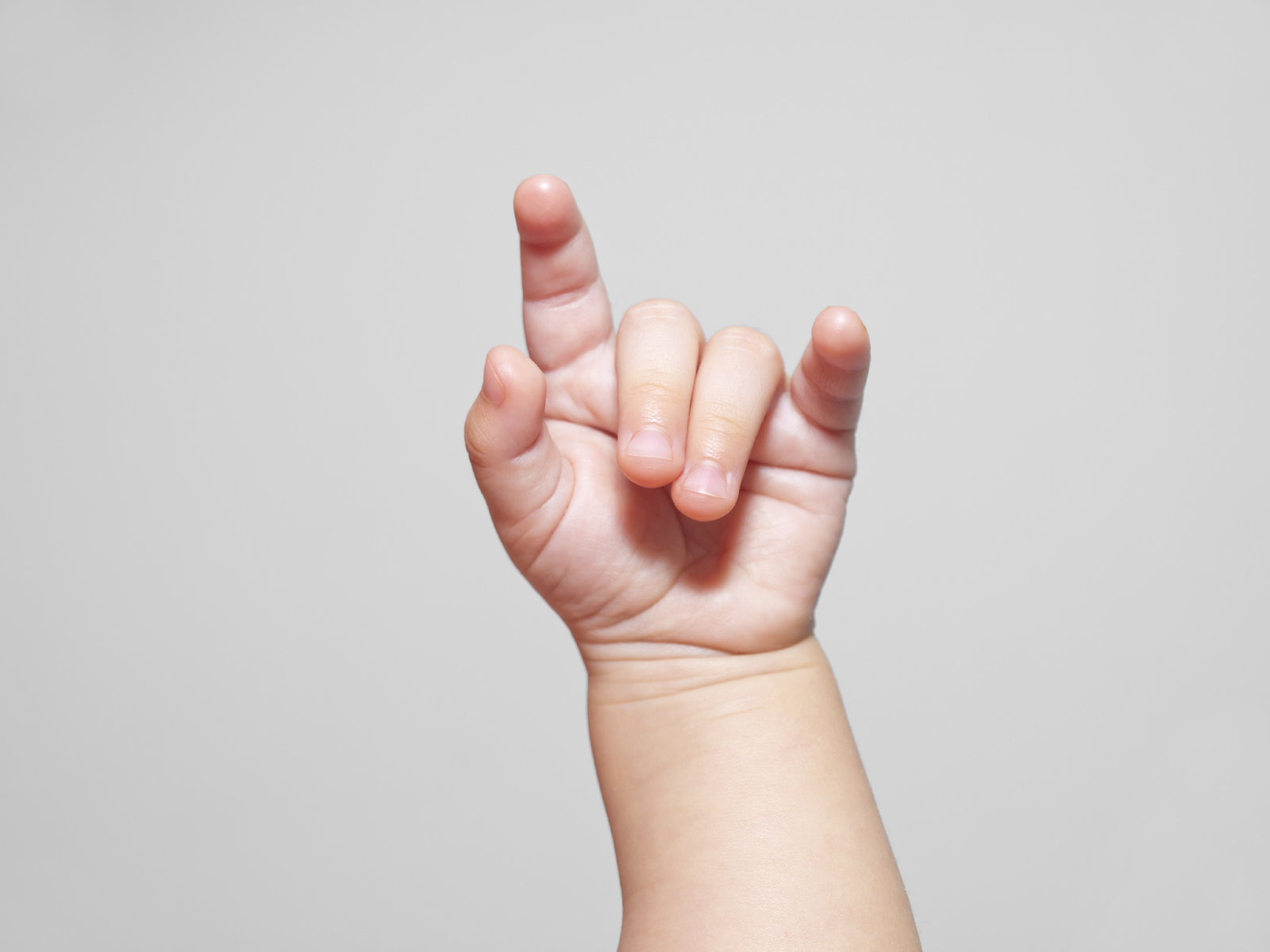Watch this adorable baby acquire sign language through rhythm and rhyme
Yes, rhythm and rhyme can exist in a visual medium. Let this baby show you.


In cultures all over the world, children are exposed to language through repetition, songs, chants, nursery rhymes, and other forms of play. Deaf culture is no different. Leala Holcomb and Jonathan McMillian of Hands Land learned American Sign Language naturally as they grew up, with parents who constantly made up playful songs and rhymes as they went about their daily routines.
How can a signed language have songs or rhymes? Rhythm and rhyme can also exist in a visual medium. The motions of signs can be repeated, elongated, or otherwise modified to take on a beat or rhythm. The internal parts of signs can also be repeated. For example, two signs that use the same hand shape "rhyme" with each other in a sense.
Hands Land is an Indiegogo project to produce a learning DVD "full of original ASL rhymes and rhythms covering a wide range of themes." In the video explanation of the project McMillan notes that hearing parents trying to sign with their children often "become so focused on signing correctly that they lose sight of their reason for learning to sign. Signing should enhance the bonds between parents and children."
The Week
Escape your echo chamber. Get the facts behind the news, plus analysis from multiple perspectives.

Sign up for The Week's Free Newsletters
From our morning news briefing to a weekly Good News Newsletter, get the best of The Week delivered directly to your inbox.
From our morning news briefing to a weekly Good News Newsletter, get the best of The Week delivered directly to your inbox.
That bonding is on adorable display here, as Holcomb’s nephew Thoreau acquires ASL joyfully and naturally through language play with his family.
Learn more about the Hands Land campaign here.
A free daily email with the biggest news stories of the day – and the best features from TheWeek.com
Arika Okrent is editor-at-large at TheWeek.com and a frequent contributor to Mental Floss. She is the author of In the Land of Invented Languages, a history of the attempt to build a better language. She holds a doctorate in linguistics and a first-level certification in Klingon. Follow her on Twitter.
-
 A lemon-shaped exoplanet is squeezing what we know about planet formation
A lemon-shaped exoplanet is squeezing what we know about planet formationUnder the radar It may be made from a former star
-
 Political cartoons for January 4
Political cartoons for January 4Cartoons Sunday's political cartoons include a resolution to learn a new language, and new names in Hades and on battleships
-
 The ultimate films of 2025 by genre
The ultimate films of 2025 by genreThe Week Recommends From comedies to thrillers, documentaries to animations, 2025 featured some unforgettable film moments
